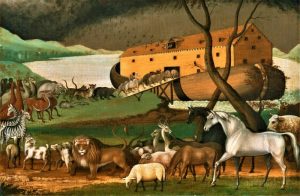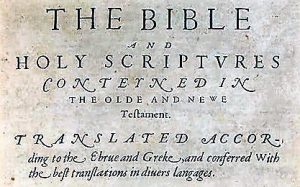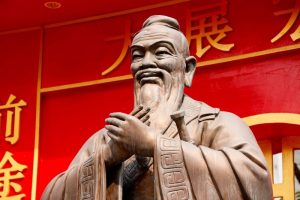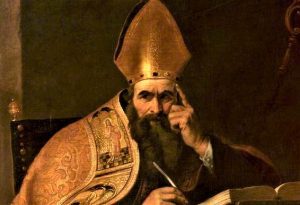Counter-Reformation
The Counter-Reformation, also known as the Catholic Reformation or Catholic Renaissance, in Christian history, was based on a time when the efforts of the Catholic Church were directed during the sixteenth and early seventeenth centuries both against the Protestant Reformation and for internal renewal. The Counter-Reformation took place during approximately the same period as the Protestant Reformation, actually beginning shortly before Martin Luther's act of nailing the ninety-five theses to the door of the church in 1517.
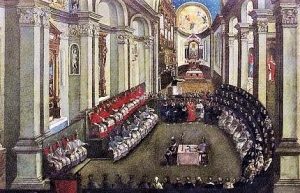
- When: From 1545 to 1648
- Outstanding figures: Leon X, Paul III, July III, Paul IV, Pius IV, Pius V, Gregory XIII, Sextus V, Saint Ignatius of Loyola, Saint Teresa of Avila
What was the Counter-Reformation?
It was a movement that was born in the second half of the 16th century in response by Catholic Church to Martin Luther's Protestant Reformation, which had been born during the early years of the 16th century.
About the Counter-Reformation
The Counter-Reformation was the response developed by Catholic Church to minimize the impact of Protestantism. It was a movement that helped to produce an ecclesiastical restructuring by introducing a series of changes in the liturgy. It was a movement that consisted in giving a new image to the church by reducing the influence of Protestant doctrines.
The Catholic Church had seen its credibility weakened by Martin Luther’s Reformation, and for this reason decided to implement its Counter-Reformation. This new movement began in 1545 with the Ecumenical Council of Trent and lasted until the end of the Thirty Years’ War in 1648; any act developed to counter Protestantism since then falls into the category of anti-Protestantism.
Characteristics
The main characteristic of the Catholic Counter-Reformation or reform was that it covered everything concerning the political and religious sphere that existed at that time. It was in charge of eliminating the sale of indulgences, the main reason why the governors of the time had given their support to Martin Luther. He also sought to reform the Catholic Church, to unite Christians, and to evangelize the territories of America.
It renewed and set new guidelines to eliminate and stop the corruption of the clergy with simple parameters and guidelines such as the defense of papal authority, the exclusive capacity of the church, the interpretation of sacred texts, and salvation by faith and works of charity.
The Counter-Reformation was charged with dividing the Catholic faith into two parts, one involving the idea of Paul IV who told us that God had a relationship with people through punishments and that for that reason we had to fear him, and the other basing religious experience on piety.
Backgrounds
The background was based on the demands for the creation of a Church reform, in the face of the scandal of the Great Western Schism and against religious abuses. New religious orders such as the Theatines, Capuchins, Ursulines and Jesuits were promoted and created. The outstanding action of Paul III in convening the Council of Trent in 1545 was an important antecedent in dealing with doctrinal and disciplinary questions caused by Protestants.
History
By the Protestant Reformation, the Western world that had been Catholic was divided between Catholic Christians and Protestant Christians who did not follow Rome’s guidelines. Catholicism had lost ground and was no longer the official religion in many parts of Europe and there was an attempt to prevent the same thing from happening in the New World. For this reason there was a need for reforms in the Catholic Church in order to restructure and stop the Protestant advance.
In the Church there was the Ecumenical Council which was a meeting of the high representatives of the Clergy, to deal with matters of great religious importance. One of these meetings took place in Trent in 1545 and was convened by Pope Paul III, in view of the attacks of Protestantism.
When was it?
The Counter-Reformation took place during a period of rebirth in the Catholic religion that began during the Ecumenical Council of Trent in 1545; the pontificate of Pope Pius IV in 1560 until the end of the Thirty Years’ War in 1648.
Representatives
The main representatives of the Counter-Reformation were:
- Giovanni Caraffa (Paul IV), founder of the Theatines and elected pope in 1555.
- Jacob Sadoleto, Italian who was elected as a reformist cardinal.
- Gasparo Contarini was appointed ambassador of Venice, England, Spain and Italy. He sought reconciliation with the Protestants.
- Ignatius of Loyola, founder of the Society of Jesus and the Roman College in 1551.
- Roberto Bellarmino, Italian, professor of theology and was the greatest Catholic apologist.
Causes of the Counter-Reformation
We could say that the main cause was the series of reforms contained within the Council of Trent which had been implemented by the Catholic Church against the spread of Protestantism and which arose from constant complaints against officials who had a high rank within the Church.
Aims and Objectives
With the Counter-Reformation they mainly sought to renew the inner part of Catholic Church, to maintain the power of the Catholic clergy, and to fight against the ideas that had been given by Martin Luther and John Calvin.
It sought to condemn the ideas of the Reformation and to refute the heretical theses of Protestantism in Germany that were gradually spreading throughout Europe. It tried to reaffirm the principles of Catholicism and defend the authority of the church in the interpretation of scripture.
Consequences
Among the main consequences that occurred with the Counter-Reformation we can mention the following:
- There were important changes in the Church and in the practice of the Catholic religion.
- There was an increase in Protestant groups and churches in Europe and America, and anti-Semitism was highlighted.
- Religious conflicts between Catholics and Protestants occurred all over Europe causing civil or religious wars in England and France.
- In Germany there was the War of the Peasants, who rebelled against the authority of the Church and princes.
- The Thirty Years’ War was created with the Protestant rebellion against the Holy Roman Empire.
- There was persecution of Protestant religious groups in countries with a Catholic majority.
- Hundreds of people in Europe and America were executed or burned, accused of witchcraft or heresy during the 16th century.
Importance of Counter-Reformation
It was of great importance for the Catholic Church as it implemented a Catholic revitalization from the period of Pope Pius IV until 1560, when the Thirty Years’ War ended. The following points were reaffirmed:
- Rejection that the Bible was the only source of doctrine.
- Salvation was obtained by God’s grace through faith and works together.
- The Eucharist was dogmatically defined as the consecration of bread in the Body of Christ and of wine in his Blood which renews mystically and sacramentally the sacrifice of Jesus Christ on the Cross.
- The veneration of iconographic images and relics of Christian worship were confirmed as Christian practice, along with the existence of Purgatory and the rites of the Western Catholic Church were united into one, the Tridentine Mass.
How to cite this article?
Briceño V., Gabriela. (2019). Counter-Reformation. Recovered on 23 February, 2024, de Euston96: https://www.euston96.com/en/counter-reformation/



